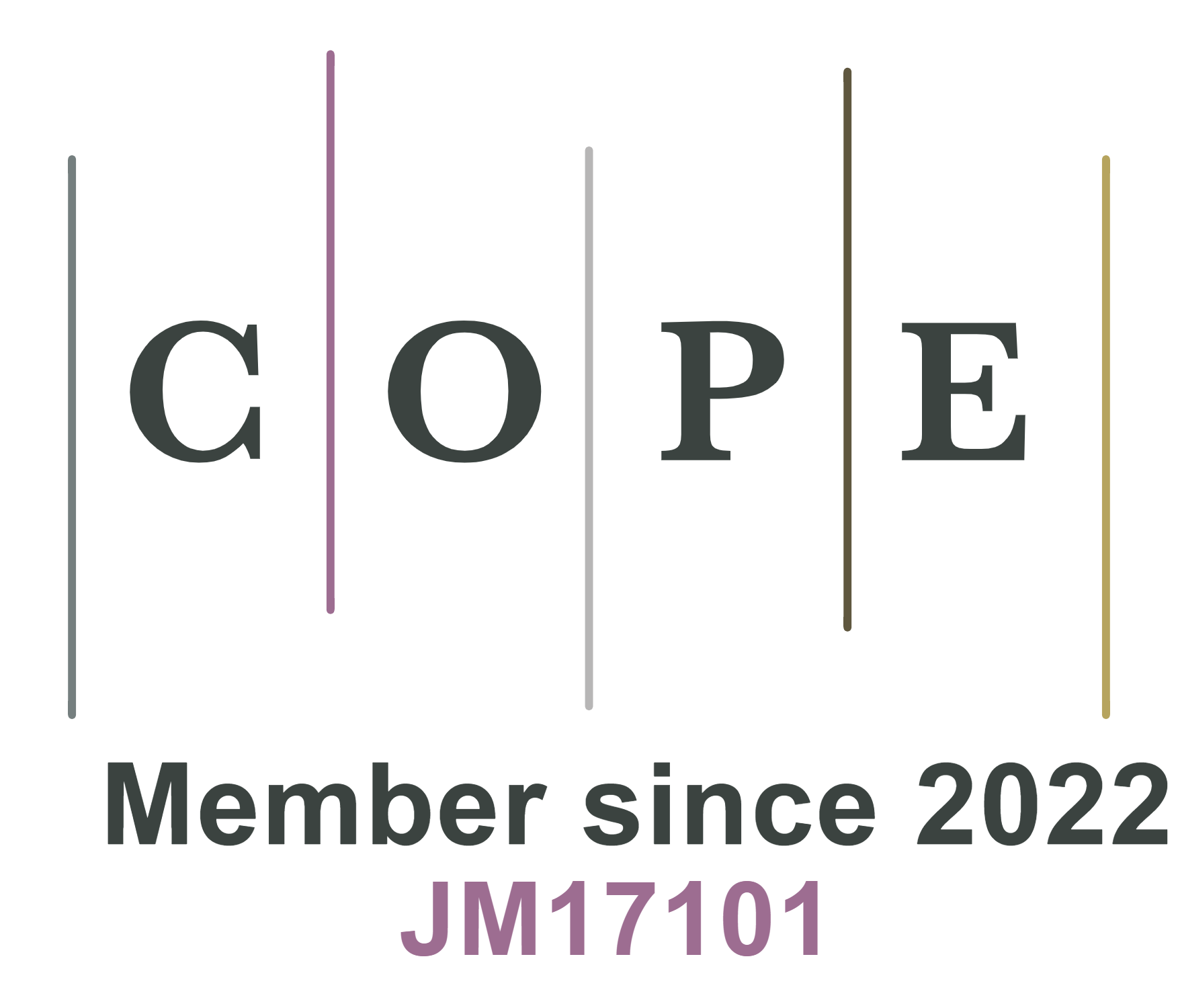Promoting the reversibility of electrolytic MnO2-Zn battery with high areal capacity by VOSO4 mediator
Abstract
Electrolytic MnO2-Zn batteries possess high energy density due to the high reduction potential and capacity of the cathode Mn2+/MnO2. However, the low reversibility of the Mn2+/MnO2 conversion results in a limited lifespan. In this study, we propose the utilization of VOSO4 as a redox mediator in the MnO2-Zn battery to facilitate the dissolution of MnO2. Through various techniques such as electrochemical measurements, ex-situ UV-visible spectroscopy, X-ray diffraction, and scanning electron microscopes, we validate the interaction between VO2+ and MnO2, which effectively mitigates the accumulation of MnO2. The introduction of the redox mediator results in exceptional redox reversibility and outstanding cycling stability of the MnO2/VOSO4-Zn battery at high areal capacities, with 900 cycles at 5 mAh cm-2 and 500 cycles at 10 mAh cm-2. Notably, even in the flow battery device, the battery exhibits a stable cycling performance over 300 cycles at 20 mAh cm-2. These research findings shed light on the potential large-scale application of electrolytic MnO2-Zn batteries.
Keywords
INTRODUCTION
Lithium-ion batteries have emerged as the leading power source due to their exceptional energy density[1,2]. However, the flammability and toxicity of organic electrolytes have raised significant safety concerns, restricting their widespread use in energy storage applications[3,4]. In light of these challenges, aqueous zinc (Zn)-ion batteries have gained considerable attention. Zn, with its low reduction potential (-0.763 V vs. SHE) [Equation (1)], abundant reserves, and affordable price, stands out as an attractive option. Furthermore, the use of aqueous electrolytes ensures inherent safety and environmental friendliness[5-9].
In the realm of Zn-ion batteries, MnO2 has traditionally served as a cathode material. It exhibits a theoretical capacity of 308 mAh g-1 by allowing the intercalation of Zn2+ and/or H+ ions while reducing Mn4+ to
However, electrolytic MnO2-Zn batteries exhibit a limited cycling lifespan due to the incomplete dissolution of deposited MnO2. This issue is exacerbated by the accumulation of MnO2 particles, which can detach from the current collector and block ion transportation channels in the separator. Consequently, substantial polarization and rapid capacity degradation occur in the battery[29,30].
To address this prominent issue, various ions have been introduced into the electrolyte of electrolytic
In this study, we employ VOSO4 as a redox mediator to enhance the dissolution of MnO2 in the electrolytic MnO2-Zn battery. VOSO4 is commonly utilized as an active component in the cathode of vanadium-based flow batteries due to its favorable reversibility and stability[37,38], Given that the reduction potential of the VO2+/VO2+ reaction is slightly lower than that of the Mn2+/MnO2 reaction (1.01 V vs. 1.228 V), VOSO4 is a suitable choice as a redox mediator for the Mn2+/MnO2 reaction. Through electrochemical measurements, ex-situ UV-visible (UV-vis) spectroscopy, X-ray diffraction (XRD), and scanning electron microscopes (SEM), we validate the interaction between VO2+ and MnO2, which effectively mitigates the accumulation of MnO2. By employing this redox mediator, the MnO2/VOSO4-Zn battery exhibits exceptional redox reversibility and excellent cycling stability, even at high areal capacities. Specifically, it achieves 900 cycles at 5 mAh cm-2 and 500 cycles at 10 mAh cm-2. Notably, even in the flow battery device, the battery demonstrates stable cycling performance for over 300 cycles at 20 mAh cm-2.
EXPERIMENTAL
Materials
Manganese sulfate monohydrate (MnSO4·H2O, 99%), zinc sulfate heptahydrate (ZnSO4·7H2O, 99%), and sodium sulfate (Na2SO4, 99%) were all received from Aladdin, Shanghai. Vanadium (IV) sulfate oxide hydrate (VOSO4·xH2O, 99.9%) was received from Macklin. Sulfuric acid (H2SO4, 99%) was sourced from the Guangzhou Chemical Reagent Factory. Carbon felt (5 mm in thickness) was purchased from CeTech Co. Ltd. Zinc foil (0.2 mm in thickness) was purchased from Tianjin Avixin Chemical Technology Co., Ltd. Cation exchange membrane Nafion 117 was acquired from Dupont.
Cell assembly
In both static and flow batteries, carbon felts were applied as current collectors for the cathodes, and zinc foils were applied as the anodes. To prevent the shuttle effect of VO2+/VO2+, the anode and cathode were separated by a cation exchange membrane (Nafion 117) in a battery. Anolytes consisted of 1 M ZnSO4 and 0.5 M H2SO4. Catholytes of E-Mn (0.5 M MnSO4 + 1 M Na2SO4 + 0.5 M H2SO4) and E-MnVO
Material characterization
UV-vis spectra were acquired using a UV-VIS Spectrophotometer (Shimadzu, UV-2600). SEM was carried out using a TESCAN GAIA3 instrument. XRD analysis was performed utilizing a PANalytical Empyrean instrument with Cu Kα radiation. X-ray photoelectron spectroscopy (XPS) measurements were conducted using a Thermos Scientific K-Alpha instrument.
Electrochemical measurements
In a typical three-electrode setup, the cathode employed carbon felt as a current collector, while a platinum plate served as the counter electrode, and a saturated calomel electrode (SCE) functioned as the reference electrode. Cyclic voltammetry (CV) and linear sweep voltammetry (LSV) were conducted using an electrochemical workstation (Gamry Interface1000). The CV was performed at a scanning rate of
RESULTS AND DISCUSSION
The electrochemical performance of the Mn2+/MnO2 was first studied using a three-electrode system. The electrolyte consisted of 0.5 M MnSO4, 1 M Na2SO4, and 0.5 M H2SO4 (referred to as E-Mn). During the galvanostatic discharge/charge measurements [Figure 1A], E-Mn exhibits a cyclic life of less than 200 cycles when charged to 5 mAh and discharged to 0.2 V vs. SCE at an applied current density of 10 mA cm-2. The limited cyclic life can be attributed to incomplete MnO2 dissolution [Figure 2A]. As revealed in the SEM image [Supplementary Figure 1], a thick layer of MnO2 remains on the carbon fiber after 30 cycles. Therefore, enhancing MnO2 dissolution is imperative to extend the cyclic life of Mn2+/MnO2.
Figure 1. (A) Charge/discharge profiles, (B) CV curves of E-Mn, E-VO, and E-MnVO at 0.5 mV s-1 and (C) cyclic performance of E-Mn and E-MnVO at 5 mAh cm-2 and 10 mA cm-2. (D) Optical images, (E) UV-vis spectra, and (F) discharge profiles of VOSO4 solution, MnO2 suspension, and a mixture of VOSO4 and MnO2.
Figure 2. Schematic illustration of the charge/discharge process of the (A) MnO2-Zn and (B) MnO2/VOSO4-Zn batteries.
The electrolyte, denoted as E-VO, consists of 0.05 M VOSO4, 1 M Na2SO4, and 0.5 M H2SO4. E-VO displays a pair of peaks at 0.75/0.71 V vs. SCE on the CV curve, corresponding to the redox reaction of VO2+/VO2+ [Figure 1B]. When charged/discharged in the range of 0.2-1.1 V at a current density of 10 mA cm-2, E-VO exhibits a stable discharge capacity of ~0.42 mAh cm-2 over 4,000 cycles [Supplementary Figure 2]. Comparatively, the VO2+/VO2+ redox couple demonstrates a lower redox potential and improved cyclic stability than Mn2+/MnO2, indicating that VOSO4 is a suitable redox mediator for the conversion reaction of Mn2+/MnO2.
The cyclic performance of E-Mn at different VOSO4 concentrations was evaluated
To elucidate the underlying mechanism of the VOSO4 mediator, we conducted an experiment by adding MnO2 powder into the blue VOSO4 solution. As a result, the precipitate dissolved [Figure 1D], leading to a change in solution color to light yellow. Accordingly, the distinct peak on the UV-vis spectrum of VOSO4, corresponding to VO2+ (~770 nm)[37], disappeared upon the addition of MnO2, suggesting a reaction between VOSO4 and MnO2 [Figure 1E]. Furthermore, we examined the discharge curves of the VOSO4 solution, MnO2 suspension, and a mixture of VOSO4 and MnO2. Individually, VOSO4 and MnO2 exhibited negligible capacities [Figure 1F], attributed to the reductive state of VO2+ and the inadequate contact between MnO2 suspended in the electrolyte and the carbon felt. However, when the mixture was formed, it became transparent and displayed a plateau at 0.70 V, indicating MnO2 oxidizes VO2+ to VO2+, which can subsequently undergo electrochemical reduction.
Therefore, the working principle of the VOSO4 mediator to improve the dissolution of MnO2 is depicted in Figure 2B. During the charging progress, the oxidation of VO2+ precedes the deposition of MnO2 on the carbon felt, generating VO2+ [Equation (3)]. Conversely, during discharge, MnO2 dissolves into Mn2+ prior to the reduction of VO2+. The reduction product VO2+ then reacts with the residual MnO2, leading to the formation of VO2+ and Mn2+ [Equation (4)]. Moreover, the resulting VO2+ is subjected to another round of electrochemical reduction [Equation (3)], steadily providing a continuous supply of VO2+ to react with MnO2 until all the remaining MnO2 is consumed. As a result, this process promotes the reversibility of the MnO2 deposition and dissolution.
To investigate the impact of the VOSO4 mediator in the MnO2-Zn full cell, we introduced VOSO4 into the catholyte of a two-electrode configuration [Supplementary Figure 5]. First, we assessed the capacity contribution and stability of 0.05 M VOSO4 in the MnO2-Zn full cell. The VOSO4-Zn batteries exhibit excellent cyclic stability, retaining a reversible capacity of 0.3 mAh cm-2 even after 3,000 cycles
Figure 3. Electrochemical performance of the MnO2-Zn and MnO2/VOSO4-Zn batteries: (A) Cycling performance at 1 mAh cm-2,
Figure 3E and F compares the rate capability of the MnO2-Zn battery and MnO2/VOSO4-Zn battery, ranging from 5 to 50 mA cm-2. As a current density of 50 mA cm-2, the MnO2/VOSO4-Zn battery exhibits a discharge plateau at 1.77 V, maintaining a reversible capacity of 3.50 mAh cm-2 and an energy density of 5.42 mWh cm-2. In contrast, the MnO2-Zn cell displays a lower discharge voltage of 1.67 V, with a reversible capacity of 3.09 mAh and an energy density of 4.63 mWh cm-2. Additionally, even when charged to
To investigate the influence of VOSO4 on the deposition and dissolution behavior of Mn2+, extensive characterization was performed on the cathodes of the MnO2/VOSO4-Zn and MnO2-Zn batteries using XRD, SEM, and XPS after charge and discharge cycles. Following the 20th charging at 5 mAh cm-2 and
Figure 4. Characterizations of the cathode in the MnO2/VOSO4-Zn battery in the 20th cycle: (A) XRD patterns at different states, (B) SEM and (C) EDS elemental mapping images after charge, (F) SEM image after discharge, XPS spectra in the region of (D) Mn 3s and (E) O 1s.
Figure 5. Comparisons of the cathodes in the MnO2/VOSO4-Zn and MnO2-Zn batteries after cycling: (A) XRD patterns, SEM images after (B) 10 and (C) 100 cycles of the cathode in the MnO2/VOSO4-Zn battery. (D) XRD patterns, SEM images after (E) 10 and (F) 100 cycles of the cathodes in the MnO2-Zn battery.
Regarding the cathode of the MnO2-Zn battery, the XRD pattern consistently exhibits increasingly intense diffraction peaks corresponding to MnO2 after 20 cycles [Supplementary Figure 13] and 100 cycles [Figure 5D]. SEM images reveal a remaining MnO2 layer on the carbon fiber with a thickness of approximately 6 μm after 20 cycles [Supplementary Figures 14 and 15], which further grows to 14 μm after 100 cycles [Figure 5E and F]. Furthermore, some MnO2 particles even detach from the carbon felt, obstructing ion transport channels on the membrane [Figure 6A]. The accumulation and detachment of MnO2 ultimately lead to the failure of the MnO2-Zn battery.
Figure 6. (A) Comparisons of Nafion membranes obtained from the cycled MnO2/VOSO4-Zn and MnO2-Zn batteries before and after immersion in E-MnVO. (B) Discharge curves and (C) cyclic performance of the failed MnO2-Zn battery after addition of VOSO4 at
Figure 6A provides a comparison of the Nafion membranes from the MnO2/VOSO4-Zn and MnO2-Zn batteries after 100 cycles. The membrane in the MnO2/VOSO4-Zn battery remains transparent, while the membrane in the MnO2-Zn battery turns black due to the migration of MnO2. However, the blackened membrane regains transparency after immersion in E-MnVO. The MnO2-Zn battery experienced failure after 218 cycles. When VOSO4 is added to the catholyte of the failed MnO2-Zn battery, the battery exhibits a discharge capacity of 31 mAh cm-2. Because a significant amount of MnO2 accumulated on the carbon felt or suspended within the catholyte reacts with VO2+ ions, generating VO2+ ions, which contribute discharge capacity through the electrochemical reduction. After VOSO4 completely transforms the accumulated MnO2 into Mn2+, the battery is successfully revived and demonstrates stable charge/discharge behavior in subsequent cycles [Figure 6B and C]. Conversely, replacing the zinc foil in the failed MnO2-Zn battery does not resolve the abnormal charge/discharge performance [Supplementary Figure 16]. This comparison indicates that the failure of the MnO2-Zn battery is primarily attributed to the accumulation of undissolved MnO2 rather than the degradation of the zinc anode. Hence, the use of the VOSO4 mediator proves effective in extending the lifespan of the MnO2-Zn battery.
Additionally, we introduced the VOSO4 mediator into the catholyte of the MnO2-Zn flow battery
CONCLUSIONS
In conclusion, our study demonstrates significant improvements in the reversibility and cycling stability of MnO2-Zn batteries through the utilization of redox mediator VOSO4. The oxidation reaction involving VO2+ effectively interacts with residual MnO2, facilitating its dissolution. As a result, when this mediator strategy is adopted in the MnO2-Zn battery, it exhibits an impressive long cycle life of 500 cycles, even at a high area capacity of 10 mAh cm-2, while maintaining a coulombic efficiency of approximately 97%. Furthermore, the MnO2/VOSO4-Zn flow battery demonstrates excellent cycle stability, maintaining performance over 300 cycles at 20 mAh cm-2. These findings provide valuable insights into the potential large-scale application of electrolytic MnO2-Zn batteries.
DECLARATIONS
Authors’ contributions
Investigation, data curation, writing - original draft: Xu Y
Formal analysis: Huang W, Liu J, Hu R, Ouyang L
Resources, supervision, writing - review & editing, project administration: Yang L
Resources, project administration: Zhu M
Availability of data and materials
The data supporting our findings can be found in the Supplementary Material.
Financial support and sponsorship
We thank the financial support from the National Key Research and Development Program of China (2022YFB2502003) and the Guangdong Basic and Applied Basic Research Foundation (2023B1515040011).
Conflicts of interest
All authors declared that there are no conflicts of interest.
Ethical approval and consent to participate
Not applicable.
Consent for publication
Not applicable.
Copyright
© The Author(s) 2024.
Supplementary Materials
REFERENCES
1. Goodenough JB, Park KS. The Li-ion rechargeable battery: a perspective. J Am Chem Soc 2013;135:1167-76.
2. Duffner F, Kronemeyer N, Tübke J, Leker J, Winter M, Schmuch R. Post-lithium-ion battery cell production and its compatibility with lithium-ion cell production infrastructure. Nat Energy 2021;6:123-34.
3. He W, Guo W, Wu H, et al. Challenges and recent advances in high capacity Li-rich cathode materials for high energy density lithium-ion batteries. Adv Mater 2021;33:e2005937.
5. Wang X, Zhang Z, Xi B, et al. Advances and perspectives of cathode storage chemistry in aqueous zinc-ion batteries. ACS Nano 2021;15:9244-72.
6. Zeng X, Hao J, Wang Z, Mao J, Guo Z. Recent progress and perspectives on aqueous Zn-based rechargeable batteries with mild aqueous electrolytes. Energy Stor Mater 2019;20:410-37.
7. Jia X, Liu C, Neale ZG, Yang J, Cao G. Active materials for aqueous zinc ion batteries: synthesis, crystal structure, morphology, and electrochemistry. Chem Rev 2020;120:7795-866.
8. Kim S, Shan X, Abeykoon M, Kwon G, Olds D, Teng X. High-capacity aqueous storage in vanadate cathodes promoted by the Zn-ion and proton intercalation and conversion-intercalation of vanadyl ions. ACS Appl Mater Interfaces 2021;13:25993-6000.
9. Zheng X, Ahmad T, Chen W. Challenges and strategies on Zn electrodeposition for stable Zn-ion batteries. Energy Stor Mater 2021;39:365-94.
10. Zhao Q, Huang X, Zhou M, et al. Proton Insertion promoted a polyfurfural/MnO2 nanocomposite cathode for a rechargeable aqueous Zn-MnO2 battery. ACS Appl Mater Interfaces 2020;12:36072-81.
11. Li L, Hoang TKA, Zhi J, Han M, Li S, Chen P. Correction to "functioning mechanism of the secondary aqueous Zn-β-MnO2 battery". ACS Appl Mater Interfaces 2021;13:36653.
12. Chen W, Li G, Pei A, et al. A manganese-hydrogen battery with potential for grid-scale energy storage. Nat Energy 2018;3:428-35.
13. Wang M, Zheng X, Zhang X, et al. Opportunities of aqueous manganese-based batteries with deposition and stripping chemistry. Adv Energy Mater 2021;11:2002904.
14. Liang G, Mo F, Li H, et al. A universal principle to design reversible aqueous batteries based on deposition-dissolution mechanism. Adv Energy Mater 2019;9:1901838.
16. Chen N, Wang W, Ma Y, et al. Aqueous zinc-chlorine battery modulated by a MnO2 redox adsorbent. Small Methods 2023:e2201553.
17. Wang M, Chen N, Zhu Z, et al. Electrode-less MnO2-metal batteries with deposition and stripping chemistry. Small 2021;17:e2103921.
18. Yu Y, Zhang H, Yang F, Zeng Y, Liu X, Lu X. Bismuth nanoparticles@carbon composite as a stable and high capacity anode for high-voltage bismuth-manganese batteries. Energy Stor Mater 2021;41:623-30.
19. Chao D, Zhou W, Ye C, et al. An electrolytic Zn-MnO2 Battery for high-voltage and scalable energy storage. Angew Chem Int Ed 2019;58:7823-8.
20. Yu X, Song Y, Tang A. Tailoring manganese coordination environment for a highly reversible zinc-manganese flow battery. J Power Sources 2021;507:230295.
21. Xu Q, Xie Q, Xue T, et al. Salt bridge-intermediated three phase decoupling electrolytes for high voltage electrolytic aqueous Zinc-Manganese dioxides battery. Chem Eng J 2023;451:138775.
22. Gou L, Li J, Liang K, Zhao S, Li D, Fan X. Bi-MOF modulating MnO2 deposition enables ultra-stable cathode-free aqueous zinc-ion batteries. Small 2023;19:e2208233.
23. Liu Y, Nan M, Zhao Z, et al. Manganese-based flow battery based on the MnCl2 electrolyte for energy storage. Chem Eng J 2023;465:142602.
24. Zeng X, Liu J, Mao J, et al. Toward a reversible Mn4+/Mn2+ redox reaction and dendrite-free Zn anode in near-neutral aqueous Zn/MnO2 Batteries via salt anion chemistry. Adv Energy Mater 2020;10:1904163.
25. Zhong C, Liu B, Ding J, et al. Decoupling electrolytes towards stable and high-energy rechargeable aqueous zinc-manganese dioxide batteries. Nat Energy 2020;5:440-9.
26. Li G, Chen W, Zhang H, et al. Membrane-free Zn/MnO2 flow battery for large-scale energy storage. Adv Energy Mater 2020;10:1902085.
27. Liu Z, Yang Y, Lu B, Liang S, Fan HJ, Zhou J. Insights into complexing effects in acetate-based Zn-MnO2 batteries and performance enhancement by all-round strategies. Energy Stor Mater 2022;52:104-10.
28. Xiao X, Zhang Z, Wu Y, et al. Ultrahigh-loading manganese-based electrodes for aqueous batteries via polymorph tuning. Adv Mater 2023;35:e2211555.
29. Liu C, Chi X, Han Q, Liu Y. A high energy density aqueous battery achieved by dual dissolution/deposition reactions separated in acid-alkaline electrolyte. Adv Energy Mater 2020;10:1903589.
30. Lei J, Yao Y, Wang Z, Lu Y. Towards high-areal-capacity aqueous zinc-manganese batteries: promoting MnO2 dissolution by redox mediators. Energy Environ Sci 2021;14:4418-26.
31. Chao D, Ye C, Xie F, et al. Atomic engineering catalyzed MnO2 electrolysis kinetics for a hybrid aqueous battery with high power and energy density. Adv Mater 2020;32:e2001894.
32. Yadav GG, Gallaway JW, Turney DE, et al. Regenerable Cu-intercalated MnO2 layered cathode for highly cyclable energy dense batteries. Nat Commun 2017;8:14424.
33. Zheng X, Wang Y, Xu Y, et al. Boosting electrolytic MnO2-Zn Batteries by a bromine mediator. Nano Lett 2021;21:8863-71.
34. Shen X, Wang X, Zhou Y, et al. Highly reversible aqueous Zn-MnO2 battery by supplementing Mn2+-mediated MnO2 deposition and dissolution. Adv Funct Mater 2021;31:2101579.
35. Chuai M, Yang J, Tan R, et al. Theory-driven design of a cationic accelerator for high-performance electrolytic MnO2-Zn batteries. Adv Mater 2022;34:e2203249.
36. Qin Z, Song Y, Yang D, et al. Enabling reversible MnO2/Mn2+ transformation by Al3+ addition for aqueous Zn-MnO2 hybrid batteries. ACS Appl Mater Interfaces 2022;14:10526-34.
37. Choi C, Kim S, Kim R, et al. A review of vanadium electrolytes for vanadium redox flow batteries. Renew Sustain Energy Rev 2017;69:263-74.
38. Liu Y, Shen Y, Yu L, et al. Holey-engineered electrodes for advanced vanadium flow batteries. Nano Energy 2018;43:55-62.
Cite This Article
How to Cite
Download Citation
Export Citation File:
Type of Import
Tips on Downloading Citation
Citation Manager File Format
Type of Import
Direct Import: When the Direct Import option is selected (the default state), a dialogue box will give you the option to Save or Open the downloaded citation data. Choosing Open will either launch your citation manager or give you a choice of applications with which to use the metadata. The Save option saves the file locally for later use.
Indirect Import: When the Indirect Import option is selected, the metadata is displayed and may be copied and pasted as needed.























Comments
Comments must be written in English. Spam, offensive content, impersonation, and private information will not be permitted. If any comment is reported and identified as inappropriate content by OAE staff, the comment will be removed without notice. If you have any queries or need any help, please contact us at [email protected].